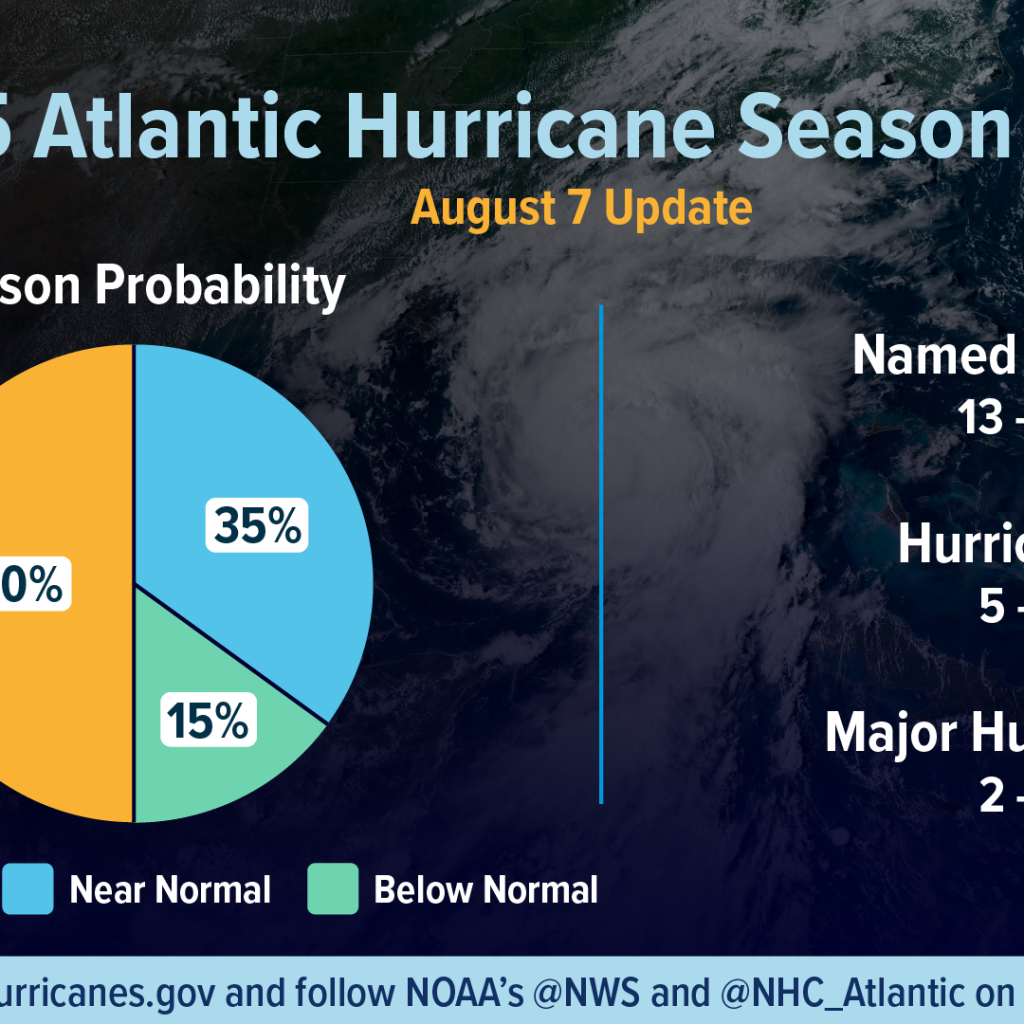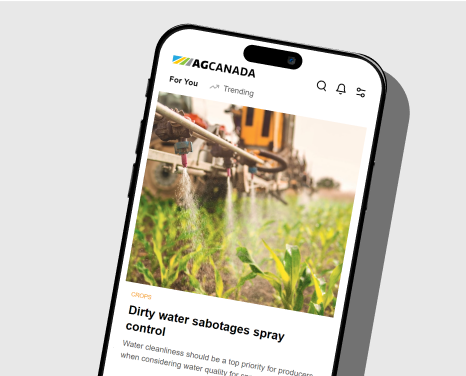NOAA calling for above average hurricane season
| 2 min read

(Image credit: NOAA)
A summary infographic with a pie chart showing hurricane season probability and numbers of named storms predicted, according to NOAA's updated 2025 Atlantic Hurricane Season Outlook on August 7, 2025. The Atlantic hurricane season runs from June 1 through November 30. (See also news release text for data found within above graphic.) (Image credit: NOAA)
The National Oceanic and Atmospheric Administration (NOAA) in the United States released updated projections on Aug. 7 calling for 13 to 18 named storms in the Atlantic basin this year.
The likelihood of above-normal activity is 50 per cent, with a 35 per cent chance of a near-normal season and a 15 per cent chance of a below-normal season, said the NOAA. The updated prediction is similar to the initial outlook issued in May that called for 13 to 19 named storms.
The named storms require winds of 39 miles per hour or greater (63 kilometres per hour). Of the storms expected this year, five to nine could become hurricanes with winds of 74 mph or greater (119 km/h) including two to five major hurricanes with winds of 111 mph or greater (179 km/h).
The adjusted ranges are for the entire season from June 1 though November 30, and are inclusive of the four named tropical storms that have already formed. In the Atlantic basin, a typical hurricane season will yield 14 named storms, of which seven become hurricanes and three become major hurricanes.
“NOAA stands ready to provide the forecasts and warnings that are vital for safeguarding lives, property, and communities,” said Acting NOAA Administrator Laura Grimm. “As we enter the second half of the season, this updated hurricane outlook serves as a call to action to prepare now, in advance, rather than delay until a warning is issued.”
Atlantic basin tropical storm activity is expected to be elevated due to a combination of factors, including warmer-than-average sea surface temperatures in the tropical Atlantic Ocean and Caribbean Seas, and an active West African Monsoon. ENSO-neutral conditions are expected to continue, meaning there is neither an El Nino nor La Nina to influence this season’s storm activity.
“No two storms are alike,” said NOAA’s National Weather Service Director Ken Graham. “Every storm presents unique, life-threatening hazards that can impact people in both coastal and inland communities. Have a plan in place, and know the actions you should take before, during and after the wide range of hazards that the hurricane season can bring.”


